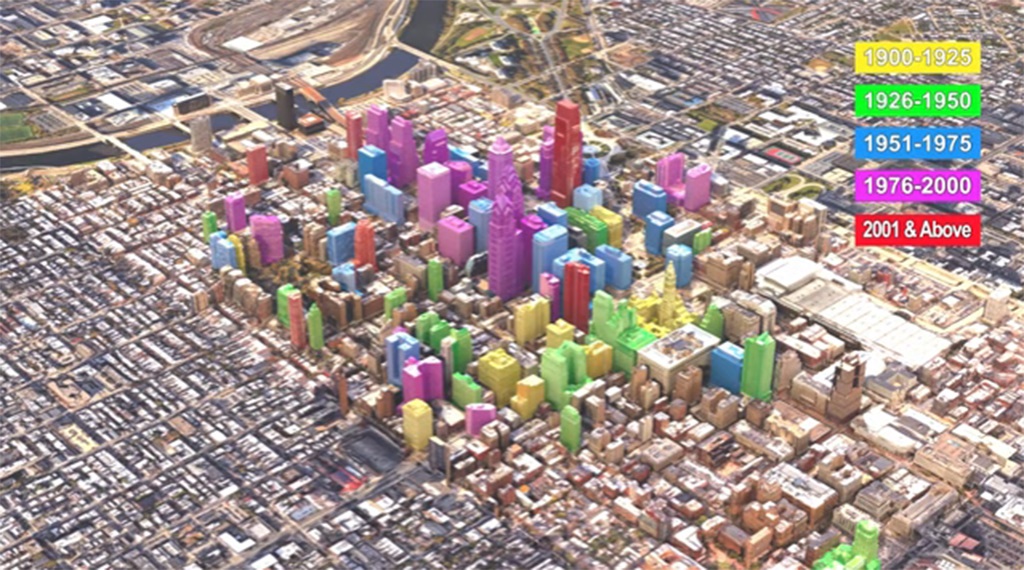We get lots of random, unsolicited emails, and delete most of them right away. Every now and then though, one of those emails has something juicy and shareworthy, like the email we received earlier today from commercial broker Commercial Cafe. They sent us a link to a video which depicts the evolution of the Philadelphia skyline since 1900, and it’s all kinds of awesome. There’s also a story that goes with the video, which gives further detail on some of the projects. Check it out, and please don’t quit on it after the clubby first 15 seconds:
Our one criticism of the video is that it’s a present day map that slowly gets filled in by the buildings as they got built, and not a slowly evolving historic map. By that we mean it would have been even more exciting, for example, to see Broad Street Station get demolished and then replaced by Penn Center, rather than seeing Penn Center emerge from flat ground as it does in the video. And the Convention Center is a bit distracting. Otherwise though, we’ve got no complaints.
The video also shows the way that high rise construction has come in waves in Philadelphia. According to the video, over two dozen high rise buildings were constructed between 1900 and 1932, and then nothing went up until the Claridge in 1951. From there, the city saw new high rise buildings rise at least every few years through the early 1990s, and then it hit another dry patch. Construction starting a comeback in 2004 with the Saint James, and in 2005 with the Cira Center, though the video forgets both of those projects, and skips right to the Comcast Center, built in 2008. And if you’ve been paying attention for the last decade, you’ve noticed that Philadelphia is right in the middle of a new high rise boom which is set to continue with the construction of the Comcast Technology Center, the W Hotel, the Alexander tower next to the LDS temple, and several others.

This video is a great reminder that the city is constantly changing and evolving, and the skyline is changing along with it. And with several high rises currently under construction and many more planned in the near future (assuming the economy continues to coorperate), the evolution of our city isn’t slowing down any time soon.
